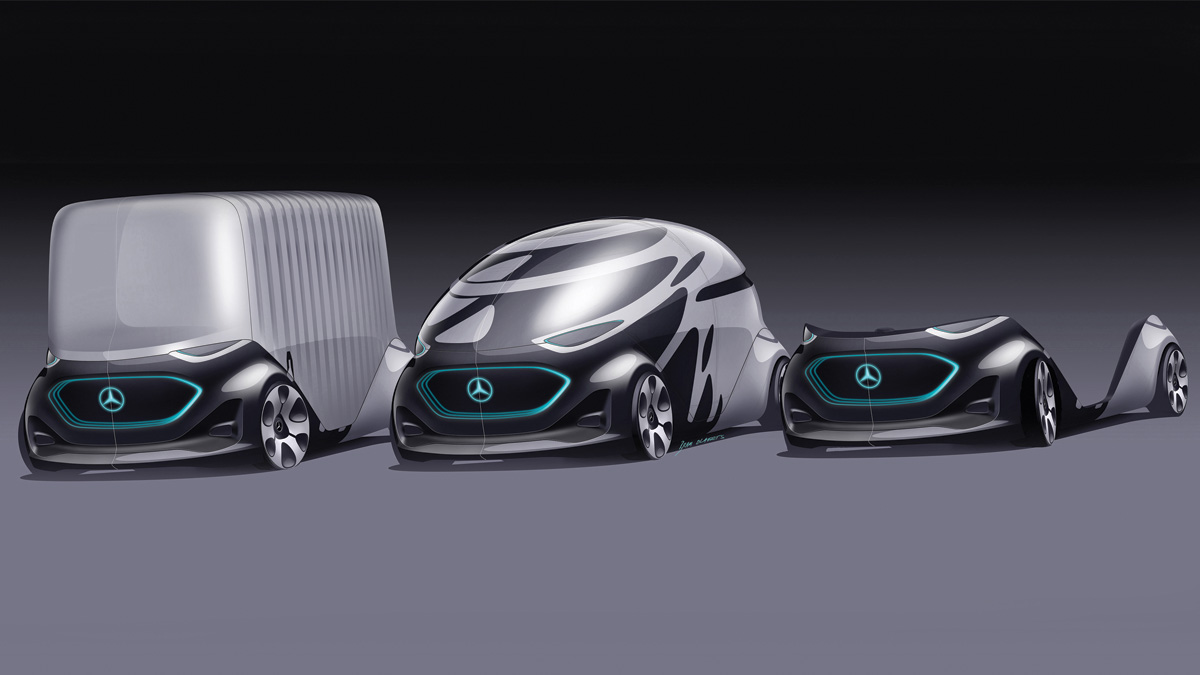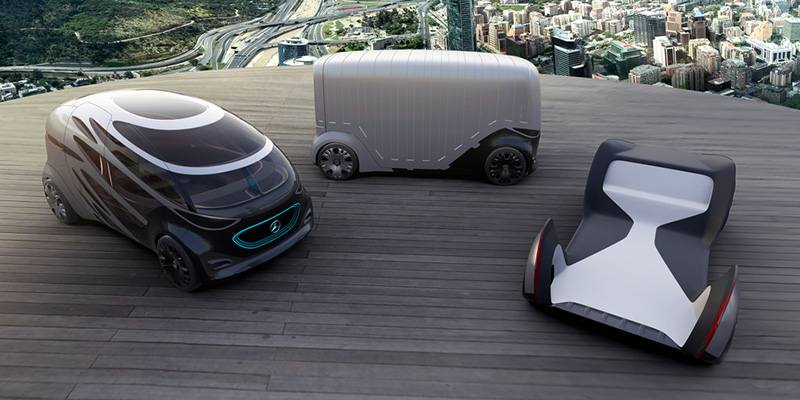A revolutionary new mobility concept, the Vision URBANETIC platform from Mercedes-Benz Vans is much more than all-electric, self-driving vehicle. Fully networked with its surroundings, it not only analyzes current needs to develop optimal solutions, but also learning from them to help anticipate future needs. For instance, the overall system can use the data captured by the vehicle control center – which collates and analyzes needs – to identify a crowd of people gathering in a certain area. It can send vehicles there to quickly and efficiently satisfy the increased demand. The system can react flexibly and is not based on rigid routes or fixed timetables.
To meet the goal of a holistic system solution for urban mobility, the vision URBANETIC (rhymes with “energetic”) features switchable bodies that can accommodate people or cargo as needed. At the time of announcement, planned are a people-mover body for up to 12 passengers, and a cargo body with a 12 foot (3.7 meter) load space. The modules are switched either automatically or manually, with the automated process taking just a few minutes.
Thanks to fully automated driverless operation, operating costs fall significantly with Vision URBANETIC. Plus, with the exception of charging times for the battery-electric drive and maintenance periods, each vehicle can be in use around the clock, 365 days a year. It means, for example, profitable operation of local public transport solutions which would not be commercially viable with a driver. Likewise, the concept provides an answer to an ever- increasing demand in areas such as the logistics sector – a lack of drivers.
Vision URBANETIC’s electric drive delivers zero-local-emissions mobility, thus making it the perfect vehicle for city centers and areas subject to legal access restrictions. The virtually noiseless electric drive also presents new options for late or night-time deliveries and thus offers major commercial potential.
The absence of a driver’s cab frees up space for interior design. Steering wheel, pedals, dashboard and the entire cockpit are things of the past. The space can instead be used for additional passengers or higher goods volume.
Many people still view autonomous vehicles with the certain degree of skepticism. To address this, Vision URBANETIC adopts a new approach, particularly with its people-mover body. The vehicle uses multiple cameras and sensor systems to observe its surroundings in their entirety and communicates actively with them. For example, it uses the large-format display on the front of the vehicle to inform pedestrians crossing the street that it has noticed them. Another example is digital shadowing around the side door. Several hundred light units display the contours of approaching individuals along the sides, signaling to them that the Vision URBANETIC has noticed them.
While the Vision URBANETIC remains a concept vehicle, it is a serious endeavor that is a clear indication of the vision of future mobility at Daimler.







0 Comments